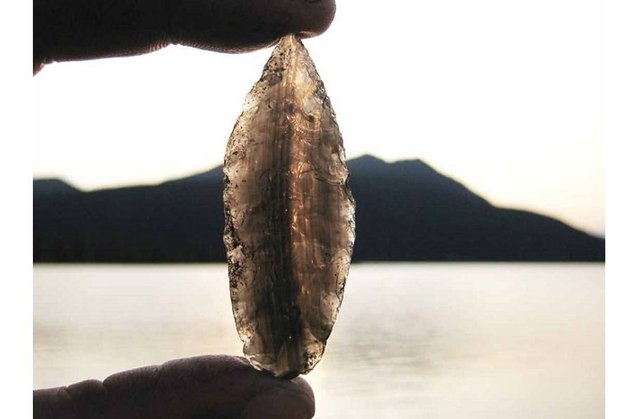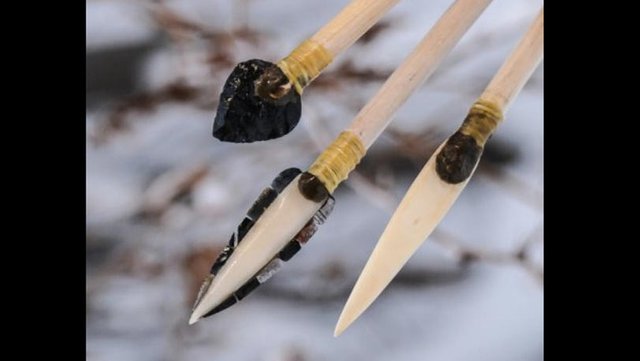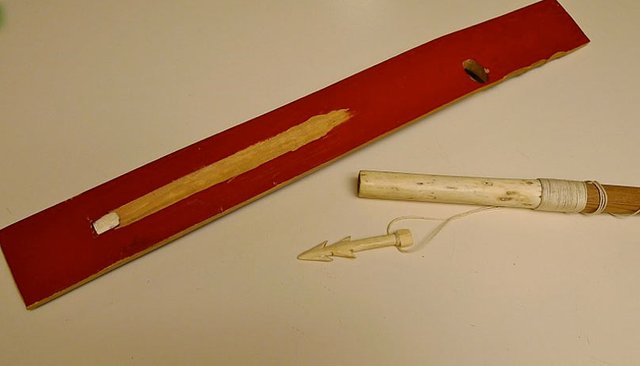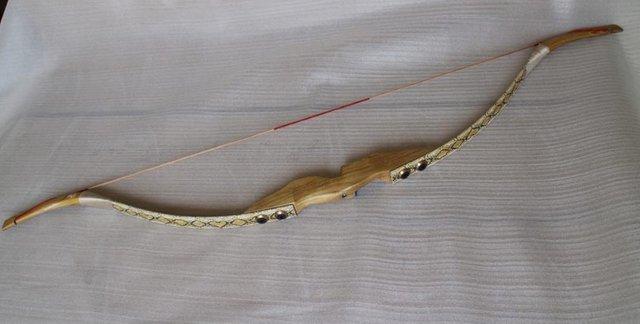Reconstructing an Ancient Lethal Weapon
)
Image Source
Archaeologists are a little like forensic investigators. They scour the remains of past societies looking for clues in pottery tools and bones about how people lived and how they died.
And just as detectives might re create the scene of a crime, University of Washington archaeologists have re created the weapons used by hunter gatherers in the post Ice Age Arctic some 14,000 years ago. Looking for clues as to how those early people advanced their own technology researchers also considered what that might tell us about human migration ancient climates and the fate of some animal species.
)
Image Source
The UW team chose to study hunting weapons from the time of the earliest archaeological record in Alaska around 10,000 to 14,000 years ago a time that is less understood archaeologically, and when different kinds of projectile points were in use. Team members designed a pair of experiments to test the effectiveness of the different point types. By examining and testing different points in this way the team has come to a new understanding about the technological choices people made in ancient times.
The hunter gatherers of 12,000 years ago were more sophisticated than we give them credit for Fitzhugh said. We haven't thought of hunter gatherers in the Pleistocene as having that kind of sophistication, but they clearly did for the things that they had to manage in their daily live such as hunting game. They had a very comprehensive understanding of different tools and the best tools for different prey and shot conditions.
)
Image Source
Prior research has focused on the flight ballistics of the hunting weapons in general, and no prior study has looked specifically at the ballistics of tools used in Siberia and the Arctic regions of North America just after the Ice Age. In addition to foraging for plants and berries nomadic groups hunted caribou, reindeer and other animals for food, typically with spears or darts thrown from atlatl boards. Without preservation of the wood shafts, these tools are mainly differentiated in the archaeological record by their stone and bone points. But it was not known how effective different kinds of points were in causing lethal injury to prey.
)
Image Source
Nor is it known definitively whether different types of points were associated with only certain groups of people or whether with the same groups used certain point types to specialize on particular kinds of game or hunting practices. It is generally accepted that different point types were developed in Africa and Eurasia and brought to Alaska before the end of the Ice Age. These included rudimentary points made of sharpened bone, antler or ivory more intricate flaked stone tips popularly familiar as arrowheads and a composite point made of bone or antler with razor blade like stone microblades embedded around the edges.
The three likely were invented at separate times but remained in use during the same period because each presumably had its own advantages Wood said. Learning how they functioned informs what we know about prehistoric hunters and the repercussions of their practices.
A Flexible and Deadly Blade The Dangerous Urumi
The Vajra An Ancient Weapon of War
So Wood traveled to the area around Fairbanks, Alaska, and crafted 30 projectile points 10 of each kind. She tried to stay as true to the original materials and manufacturing processes as possible, using poplar projectiles and birch tar as an adhesive to affix the points to the tips of the projectiles. While ancient Alaskans used atlatls a kind of throwing board Wood used a maple recurve bow to shoot the arrows for greater control and precision.
)
Image Source
For the bone tip modeled on a 12,000 year old ivory point from an Alaskan archaeological site Wood used a multipurpose tool to grind a commercially purchased cow bone.
For the stone tip she used a hammerstone to strike obsidian into flakes then shaped them into points modeled on those found at another site in Alaska from 13,000 years ago.
And for the composite microblade tip modeled microblade technologies seen in Alaska since at least 13,000 years ago and a rare preserved grooved antler point from a more recent Alaskan site used more than 8,000 years ago. Wood used a saw and sandpaper to grind a caribou antler to a point. She then used the multipurpose tool to gouge out a groove around its perimeter into which she inserted obsidian microblades.
References:
http://www.ancient-origins.net/news-history-archaeology/reconstructing-ancient-lethal-weapon-009549
"Thank you reading for my post"
follow upvote resteem @perjames